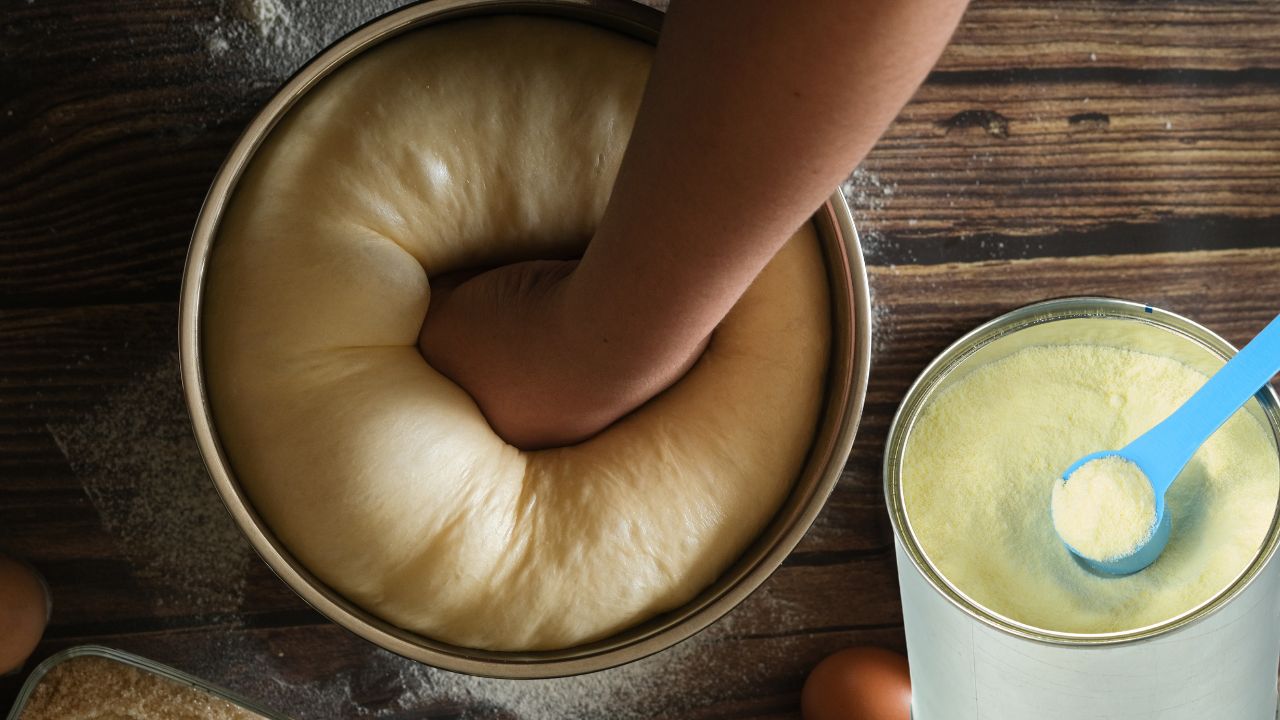Milk powder, also called dry or powdered milk, is a common ingredient in many bread recipes. It sweetens and enriches dough, which is perfect for sweet rolls and buns.
Still, a regular loaf of bread can also benefits from milk powder. It gives your loaf a smoother and richer flavor, a more tender texture, a darker golden crust, and a higher rise.
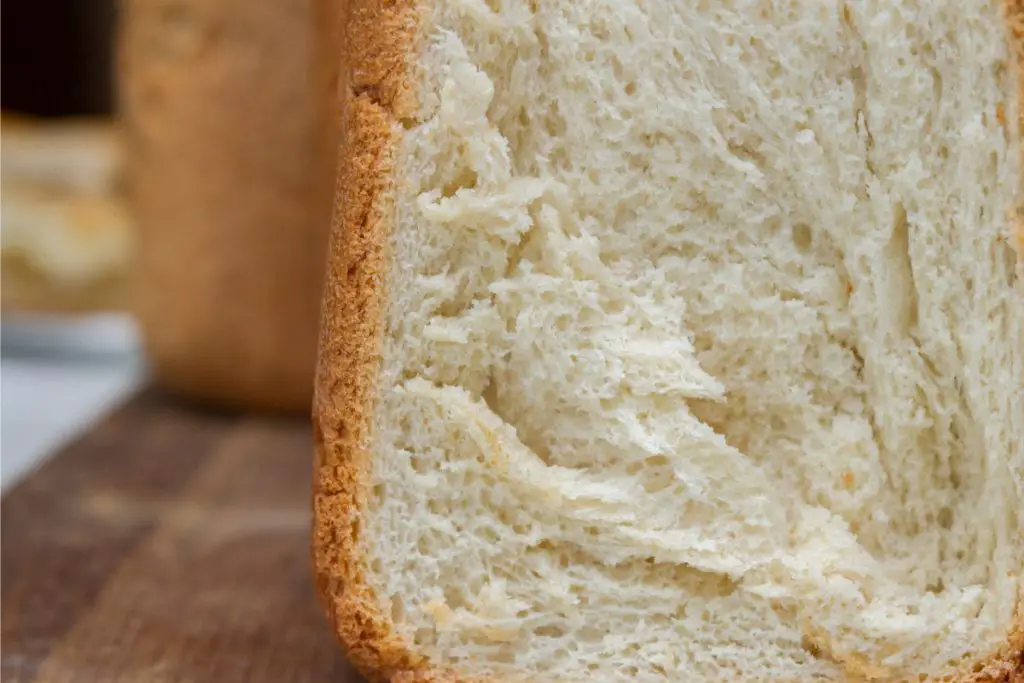
However, if you don’t have milk power at hand, don’t worry; here are five substitutes you can use instead of milk powder in bread recipes that can be used for oven-baked and bread machine recipes.
What can I use instead of milk powder in bread recipes? Here are my top 5 favorite substitutions that work just fine.
1. Fresh Dairy Milk
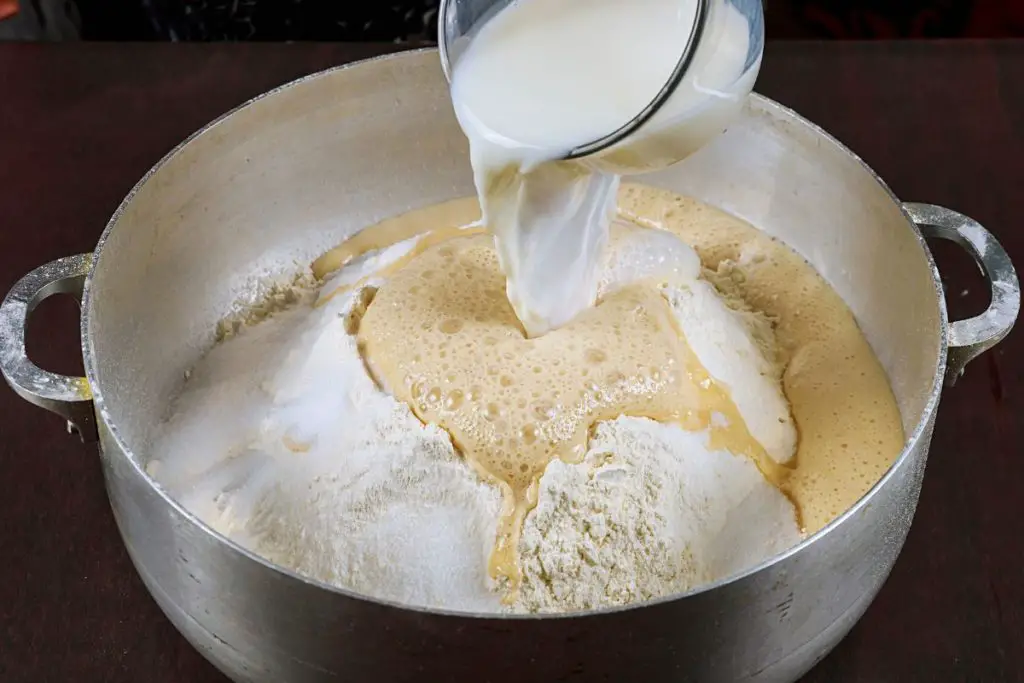
Powdered milk is nothing more than regular milk that has been pasteurized and dried up through a careful evaporation process, leaving behind only the solid components. Naturally, this makes it just a more concentrated version of milk, deprived of any moisture [1].
Since they’re basically the same ingredient, regular fresh milk should be your first option as a substitution for milk powder.
How Does It Change The Taste Or Texture Of Bread?
The only difference between fresh and powdered milk is the moisture levels, so if used correctly, there should be virtually no difference in the flavor, texture, or consistency of your bread.
However, if the moisture difference is left unacknowledged, you risk incorporating extra liquid into the original recipe, which may completely change the outcome.
Powdered Milk To Liquid Milk Conversion
Considering that milk is liquid, you need to leave out some of the water from your bread recipe before incorporating fresh milk as a replacement for milk powder.
As a general rule, every 1 cup of fresh milk (240 ml) equals ¼ cup (32 g) of powdered milk. That means you’ll have to take away one cup of water from the recipe before incorporating one cup of fresh milk.
Read Also: Bread Machine Troubleshooting For Baking A Perfect Loaf.
2. Soy Milk Powder
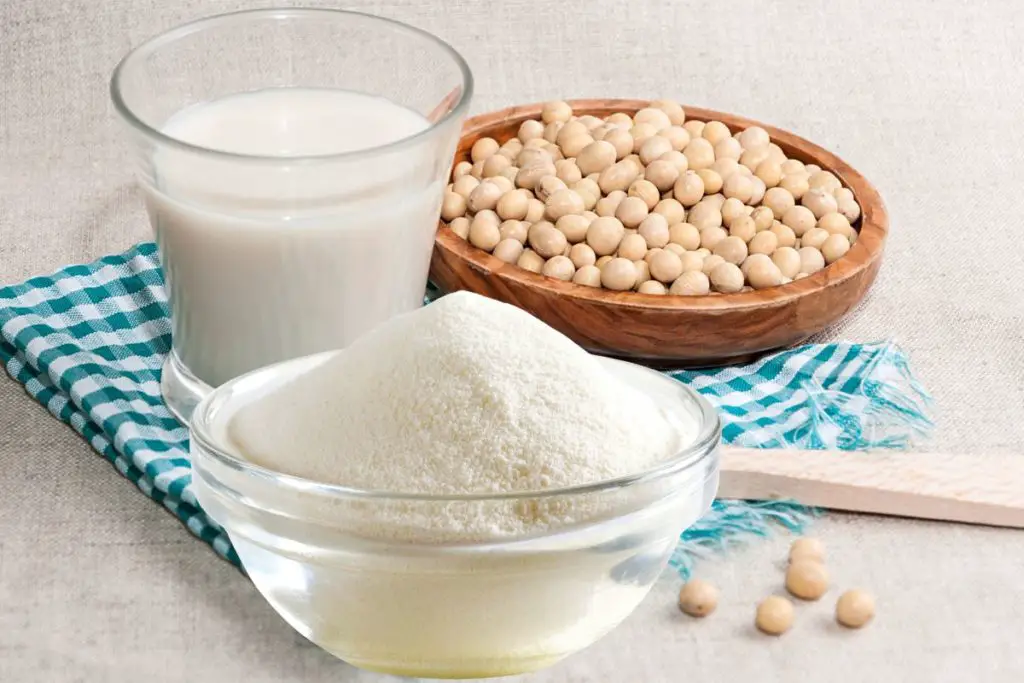
Soy milk is by far one of the most popular alternative milk options on the market right now, so it is not a surprise to know there is a powdered version.
Out of all the non-dairy alternatives, soy milk power may be the most used option; still, I have left some of my favorites at the end of the list. The texture kind of imitates powdered milk and has a near-identical nutritional profile [2].
TAP ON IMAGE TO VIEW PRICE
However, keep in mind that soy milk is a somewhat-common allergy trigger, so you should be careful if baking for someone else.
Effects of Soy Milk Powder On Bread Recipe?
Soy milk is the closest to regular milk, so using the powdered version in a recipe won’t change the texture or flavor much. It is perhaps a tad bit sweeter than regular milk powder, but not enough to produce a highly noticeable change.
When it comes to texture, it may increase the bread’s volume and make it slightly browner due to the increased sugars in the mixture.
How To Use Soy Milk Powder In Baking?
In nearly all bread recipes, the replacement ratio is an even 1:1, which means that you can safely replace each required cup of milk powder with a cup of soy milk powder without noticing any significant difference in your finished loaf.
3. Potato Milk Powder
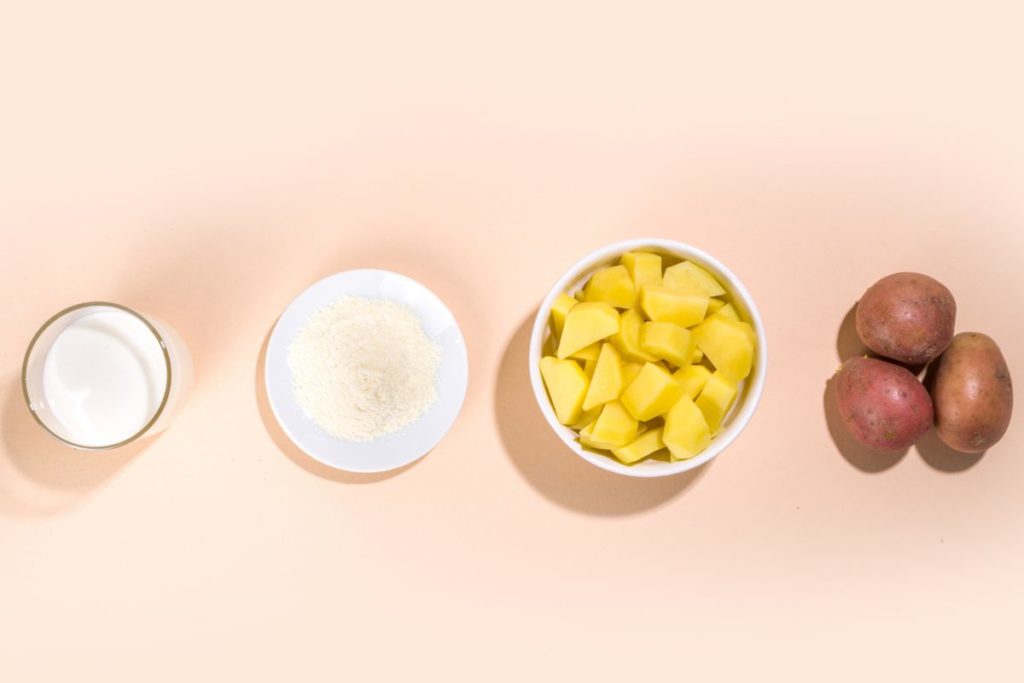
One of the newest milk replacement products is potato milk, a trendy new beverage that has been taking the world by storm and has become one of the most popular vegan products of 2022.
Just like milk powder, you get potato milk powder by evaporating the moisture and working with the solids left behind. Unfortunately, the powder version is not readily available yet, but if you manage to find it, it is a good plant-based, lactose-free alternative to regular milk powder in your bread recipes.
Read Also: How To Make Potato Milk – Here Are The Best Spuds For The Job.
Benefits And Disadvantages When Baking
Powdered potato milk lacks protein, which may make the bread a tad bit softer than the recipe intended. However, the change may not even be that noticeable if you are working with flour with high enough protein content.
From my experience, I would say that potato milk benefits the texture and helps to keep the moisture in the bread.
Flavor-wise, potato milk does not taste like potatoes; if anything, it has a neutral, slightly nutty taste that will not affect the outcome.
What Is The Replacement Ratio?
Due to their nearly identical structure and volume, the best approach is to use a 1:1 ratio.
4. Rice Milk Powder
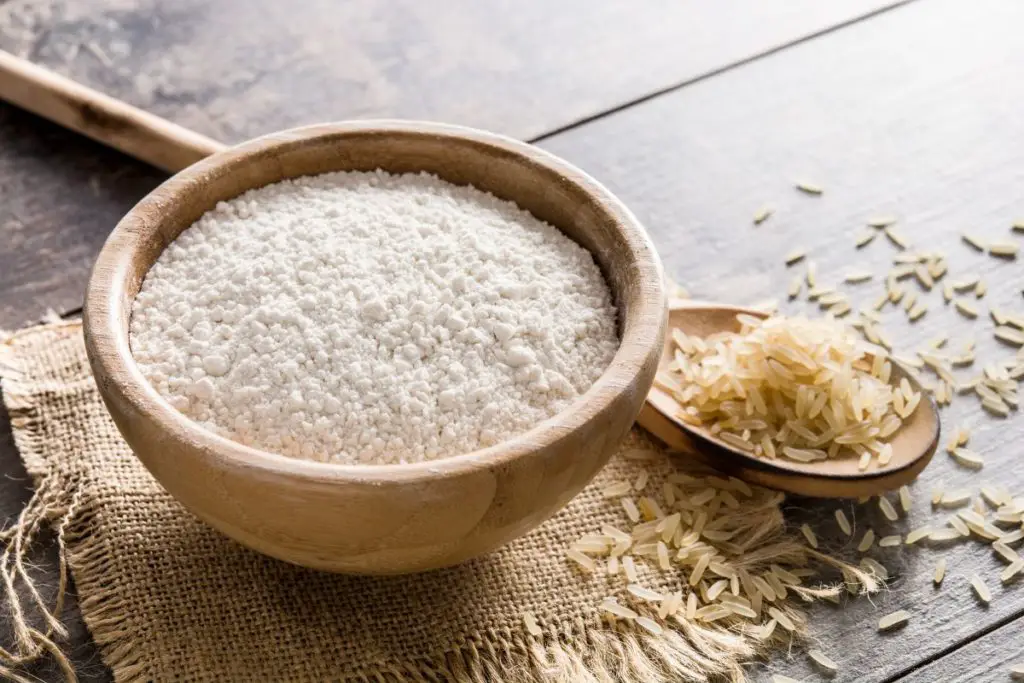
Rice milk powder is another excellent delicate, neutral-tasting, plant-based, and lactose-free option for those allergic or otherwise intolerant to soy or lactose. It is usually a substitute for wheat flour, but due to its sweetness, it is often incorporated into coffee, sweets, and beverages and used as a substitute for soy milk powder or regular milk powder in baking recipes [3].
TAP ON IMAGE TO VIEW PRICE
How Does Rice Flour Affect Baking?
Rice milk powder has a near identical nutritional profile to brown rice and a texture that is virtually indistinguishable from regular milk powder. However, keep in mind that it has a high starch content and is low in protein, so it may make the bread slightly less fluffy and structured, not to mention a bit tougher.
As for flavor, rice powder is slightly sweeter than powdered milk, affecting the taste. It may be best to use it as a substitute in sweet bread recipes.
What Is The Rice Powder To Milk Powder Replacement Ratio?
Just like soy milk powder, rice powder should replace milk powder in a 1:1 ratio. Depending on your recipe, you may also need to remove a tablespoon of sugar to compensate for the increased sweetness.
5. Cashew Milk Powder
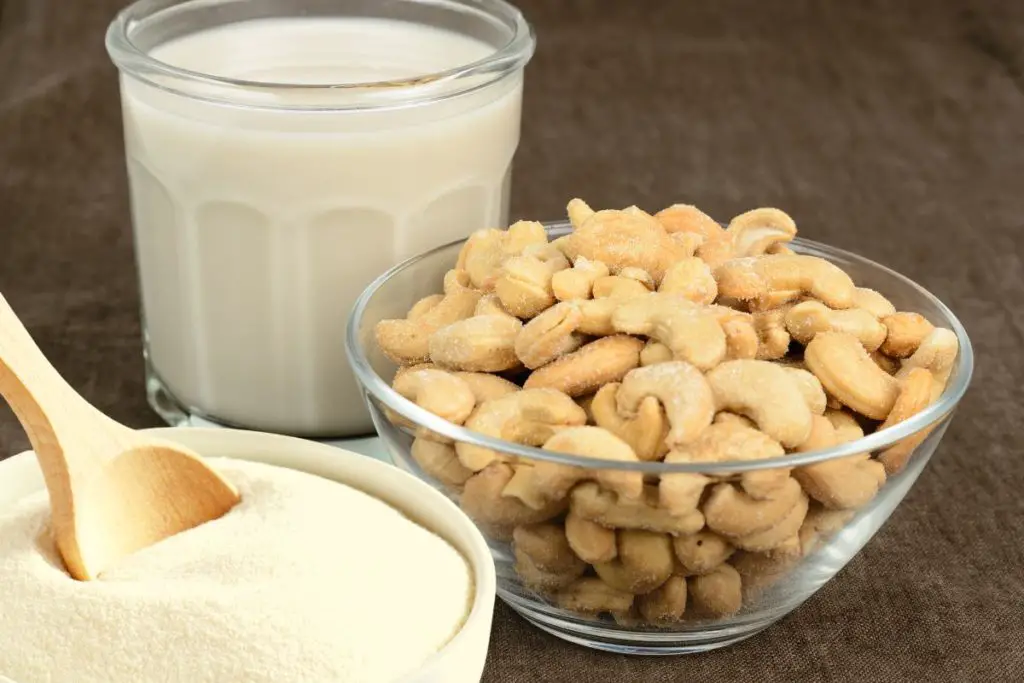
One of the most well-known milk alternatives is the trendy cashew milk, a nut beverage that is nutritionally close to almond milk. It is naturally lactose, soy, or gluten. The powder version is just as valuable, but it also stands out as a fantastic milk powder substitute for baking recipes [3].
TAP ON IMAGE TO VIEW PRICE
Cashew powder is great for baking because its texture is fine and quite close to flour, making it ideal for bread recipes. I should have really put it higher up on the list.
Baking With Cashew Milk Powder
Keep in mind that part of the appeal of including powdered milk in bread recipes is to add softness to the loaf due to the increased fat content. Since cashew milk powder is naturally lower in fat, it may not make the bread as soft.
Flavor-wise, cashew milk powder will add a touch of nutty sweetness that is impossible to resist. The flavor is slightly earthy but subtle enough not to be overwhelming. In my opinion, it tastes better than soy milk powder.
Ideal Substitution Ratio For Cashew Powder Vs. Milk Powder
As with the other powdered substitutes featured in this list, the replacement ratio is usually 1:1. You won’t need to worry about including or excluding any ingredients; use it as you would a regular milk powder.
If you don’t have any of these on this list, check out these 9 Best Lactose-Free Milk Powders that can also be used in baking and bread recipes.
In Conclusion
There are many substitutes for milk powder in bread recipes. You can use soy milk powder, rice powder, cashew milk powder, or regular milk. Most of them are great dairy-free, lactose-free alternatives that won’t affect the taste and texture of your baked goods and are easy to substitute.
Related Post: Simple Honey Oat Bread Machine Recipe – (Moist And Fluffy).
Sources:
- [1] Sedghi, Sarra (2022). What Is Powdered Milk? Retrieved from https://www.allrecipes.com/article/what-is-powdered-milk/.
- [2] Migala, Jessica (2019). All About Soy Milk: Nutrition, Benefits, Risks, and How It Compares With Other Milk. Retrieved from https://www.everydayhealth.com/diet-nutrition/pros-cons-soy-milk/.
- [3] Dand, Khyati (2022). 10 Best Substitutes For Dry Milk. Retrieved from https://www.mashed.com/493429/x-best-substitutes-for-dry-milk/
